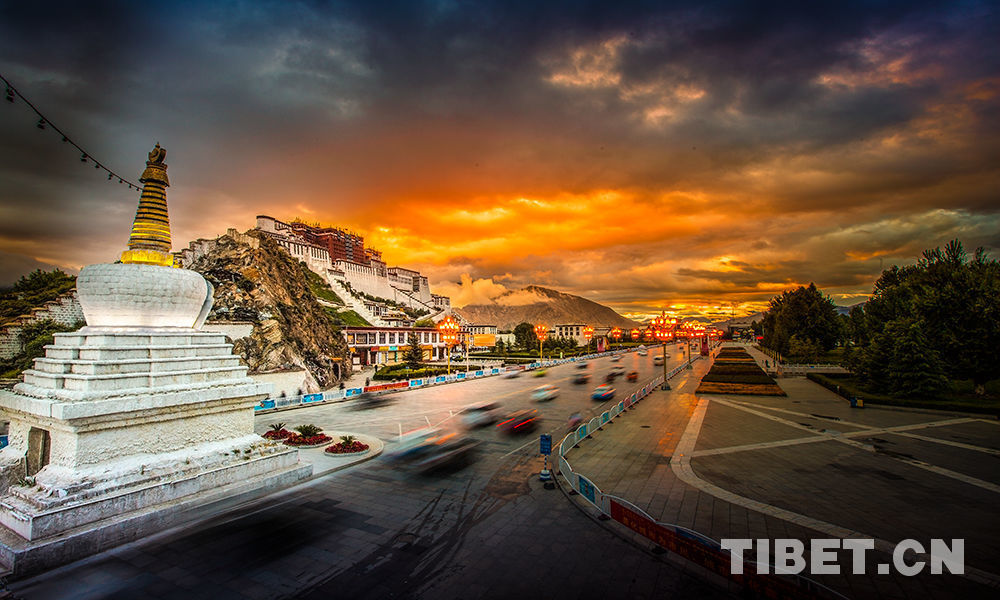Time to wake up from dreamland Tibet
In 2001, Dr. Martin Brauen, a Swedish anthropologist opened a museum named “Dreamworld Tibet-Western and Chinese Phantoms”. Dr. Brauen is one of the westerners who became fascinated with Tibetan culture and Buddhism when he was young. But now he began to ask himself why he is so keen to Tibet?
Chinese scholars find that the Western view on Tibet is, in fact originated from Orientalism of the European missionaries, explorers and philosophers. However, a real Tibet is not what they have perceived. It is time for Westerners to wake up from their dream.
Edward Said, Palestinian-American cultural critic found the inaccuracies of Orientalism, the foundation of Western thought toward the East, which holds that Tibet is merely a dreamland created by Westerners.
Another home of Christianity
Back in the 13th century, some missionaries came to Tibet in search for lost Christians since they believed that Tibetans were descendants of Christians, who spread religion in central Asia and China in the early Middle Ages. However, this viewpoint is based on the experience of the Europeans, who held that the West was the center of the world while the East was only a subordinate. And this view is still quite influential at the present time.
German philosophers’ views on Tibet
During the 18th and 19th century, some German philosophers gave criticism to Tibetan Buddhism, but all were rooted from their different standpoints on Catholicism. For example, Herde regarded Tibetan Buddhism as a kind of Catholicism in the Middle Ages, with his focus of Tibet only on religion. This view is also popular in the modern times.
Kant observed Tibetan Buddhism from the perspective of linguistics. He understood China from the knowledge of the early missionaries, and stressed that it was through Tibet that China got connected with the European countries, the core of Kant’s view on Tibet. He also believed that Tibetan language belonged to the same family with the European languages.
Further, Hegel equalized his knowledge of Tibet only to his understanding of Tibetan Buddhism.
Theosophy and image of Tibet
From the 19th to 20th century, Theosophy, a theory of communicating with ghost by instinct came into being. Helena P. Blavasky, founder of Theosophy from Russia claimed that she could talk with Tibetan gurus and issued mysterious messages. Although these messages did not come from Tibetan lamas, the “communication” did exert a big influence on Tibetology. Though the theory created an ideal and supernatural image of Tibet, which is quite different from its reality in the feudalist serfdom era, it shaped the understanding of the Westerners toward the East, especially Tibet. In fact this phenomenon came from the anxiety of the Western people toward the modern society, for which they were trying every way possible to look for “another” world. In a word, Westerners’ perception about Tibet is deep rooted in mysticism.
Tibet in Racist and Nazi’s ideologies
In the 20th century, Nazis deemed Tibet as the homeland of the ancestors of Aryans and mystic wisdom. A story written by French scholar Louis Pauwels goes that some survived sages settled down in the Himalayas after a severe flood. One of the group arrived in Shangri-la. Obviously, this was only a fabrication made by the Europeans, who regarded Tibetans as descendants of the Aryans. However, it had made a big impact on the Nazis headed by Hitler.
Image of lamas in the Western culture in the 1960s’
The Tibetan studies after the Second World War has achieved a great progress with fruitful results such as Lost Horizon by James Hilton, Le Message des Tibetains by Arnaud Desjardins, Himalaya, Terre de Serenite: Le Lac des Yogis made by Hollywood Studios, which all repeated the same story of Shangri-La. However, all of them were merely fantasies of the western world, who saw Tibet as a land full of mystery, spirit, insights, non-technology, peace, morality and psychics. Matthieu Richard, author of Le moine et le philosophe described Tibet as a culture emerged in spiritual life. He said that Tibetans conformed to the sages, perfect and wise men, whom the westerners would barely find in their own world. As time went on, these roles had been gradually replaced by lamas, who were also creatures coined by westerners. And some of the lamas have become models of the western elite and mass culture, which reflected the self image of westernersin the modern society.
Westerners’ dream of Tibet
With the decline of the 1960s, westerners’ dream of Tibet had become commercialized as seen in the advertisements of department stores, movie theaters and galleries, and as what the above-mentioned “Dreamworld exhibition” put on. Those who lost their beliefs turned to spiritual Tibet as a vogue instead of a homeland. However, many people in T-shirts with Tibetan-style signs might not know anything about Tibet. Seven Years in Tibet directed by Jean-Jacques Annaud and Heinrich Harrer, a Hollywood movie is one of them. Though the movie became popular in the western world, hardly did any westerner know that Harrer was a Nazi himself, who had a close contact with the 14th Dalai Lama while he lived in Tibet.
Those volunteers who grabbed the Olympic Torch in some Western countries were among those who have been brainwashed by Orientalism - the Cold War ideology and Hollywood movies.
It may be disappointing for some Westerners that the Tibetan civilization does not lie in their illusion. And the phantom will not contribute to the progress of the Tibetan society. According to Said, it was only cultural hegemony that has endowed Orientalism with persistence and force. The core of the European culture is the superiority over other non-European cultures. Up till now, the Western world has not spared from the influence of Orientalism, by which those desperate toward their own society can easily find consolation of souls in their dreamland Tibet.
However, they have never considered that Theosophy has not only defaced the history and reality of Tibet, but also hurt the Chinese who are opening their arms to them. It is a pity that the Chinese never know that what they face are a bunch of westerners with an Orientalist mindset accumulated over centuries. When they come to realize that a real Tibet is not the same as what they have imagined, hatred rise immediately in their heart because they are lost as to where to go without the precondition of building up their self image.
As a matter of fact, there is never a Shangri-La in this world. It is time for the westerners to wake up in their self-coined dreamworld.
.
Your Comment
Name E-mailRelated News
-
;











